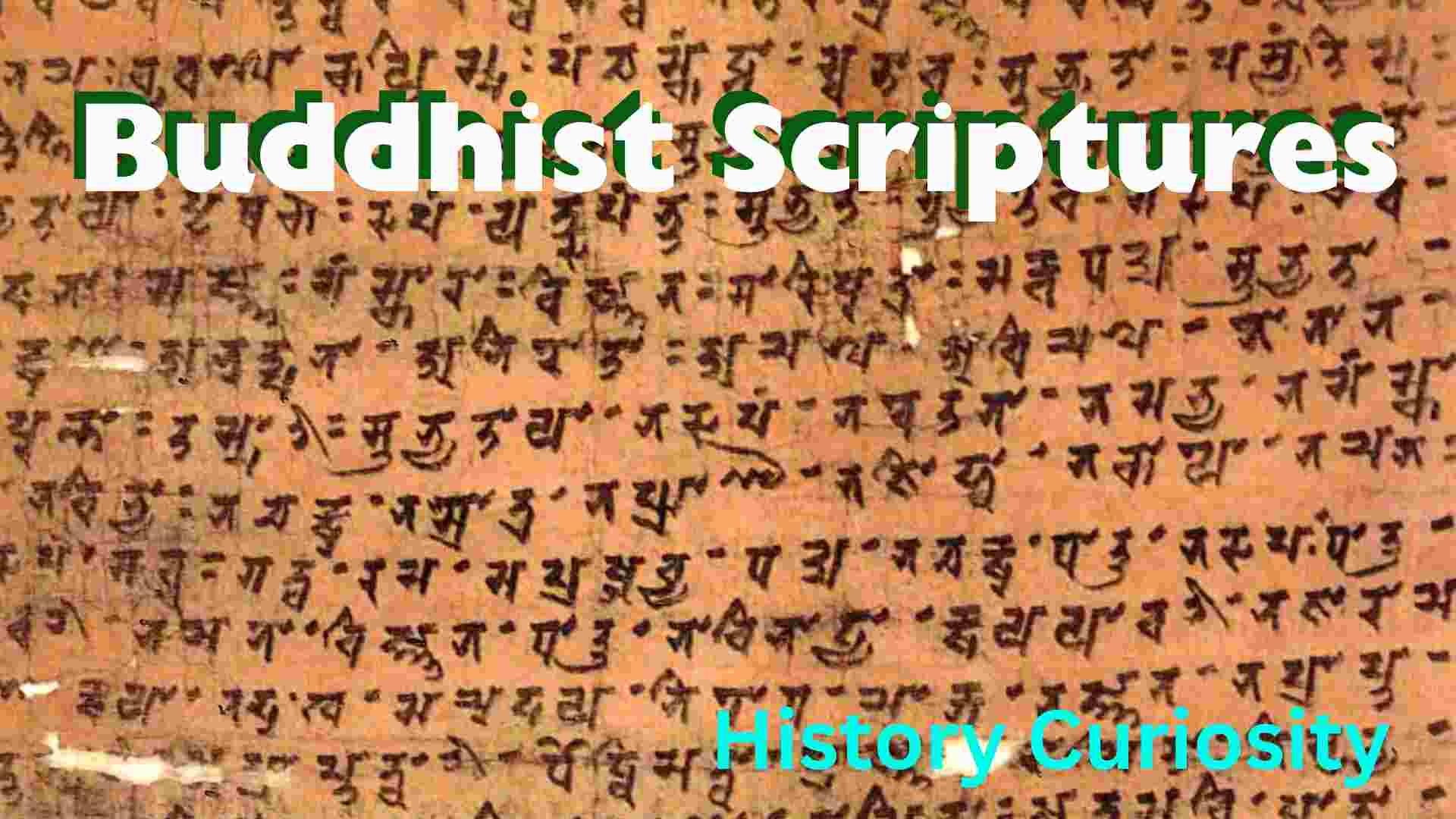The Buddhist scriptures, also known as the Buddhist canon or Tripitaka, are the sacred texts of Buddhism. This meta-description provides a brief overview of these ancient writings that play a central role in Buddhist tradition and philosophy.
Buddhist scriptures are divided into three “baskets,” or Pitakas: Vinaya Pitaka (rules for monastic discipline), Sutta Pitaka (discourses of the Buddha), and Abhidhamma Pitaka (philosophical and analytical texts). These texts contain teachings, stories, and guidance attributed to Siddhartha Gautama, the Buddha.
They cover a wide range of topics, including morality, meditation, and the nature of reality. These texts serve as a foundation for Buddhist practice and philosophy and offer insight into the path to enlightenment and the alleviation of suffering.
In short, the Buddhist scriptures are a profound and timeless collection of texts that continue to guide and inspire millions of Buddhists around the world, providing wisdom and spiritual guidance to those on the path to awakening.
The Buddhist Scriptures
| Historical Facts | The Buddhist Scriptures |
| scriptures | Pali |
| Pali means | Sacred text |
| Buddhist scriptures | Tripitaka |
| First council | Rajagriha |
| The Vinaya Pitaka | Rules and regulations |
| The Sutta Pitaka | Buddha’s speech |
| The Abhidhamma Pitaka | profound philosophy |
Introduction
The sacred scriptures of the Buddhists are in Pali. The word Pali simply means “text” or “sacred text.” As a language, Pali is an archaic Prakrit, and in the time of the Buddha, it was the spoken language of Magadha and the adjacent territories. Since the Lord Gautam Buddha spoke in Pali, the Pali canon is considered the most authentic version of the Buddha’s words. Buddhist scriptures in Pali are commonly referred to as the Tipitaka (Tripitaka), i.e., the “Three-Part Basket”. The three “Baskets of the Law” (Pitakas) are:
- 1. Vinaya Pitaka
- 2. Sutta Pitaka
- 3. Abhidhamma Pitaka
The Pali Canon was initially defined at the First Council, presided over by Maha Kassapa, and held at Rajagriha sometime after the Buddha’s Mahaparinirvana. Upali recited the Vinaya during this council (samiti), while Nanda, the Buddha’s close friend, delivered the dhamma. At a second council that was held at Vaishali under Sabakami one hundred years later, a new edition of the scriptures was produced. The Pli canon was significantly modified by the Third Council, which Asoka convened at Patna (Pataliputra) and managed with Moggaliputta Tissa as its head. The descendants of Ashoka, Mahindra, and Sanghamitra eventually introduced Buddhism to Sri Lanka. The entire Pali canon had been kept in safety on this island at the time, but it was finally lost to India, its native home.
The Sutta Pitaka consists mainly of discourses, short and long, as delivered by the Buddha himself on various occasions. It also includes several discourses delivered by some of his distinguished disciples, such as Sariputta, Ananda, Moggallana, and others. The sermons contained in them serve as moral guidelines. The Dhammapada (Way of Truth), containing a summary of the Buddha’s universal teachings, is considered one of the world’s greatest religious texts.
The Abhidhamma Pitaka contains the profound philosophy of the Buddha’s teachings. Abhidhamma examines mind and matter, the two composite factors of so-called being, to help understand things as they are.
The Pali Canon is further divided into nine parts based on the substances they contain. These nine divisions are:
- 1. Sutta Nikaya (Prose Sermon)
- 2. Geyya Nikaya (Sermons in Prose and Verse)
- 3. Veyyadkarana (Commentary)
- 4. Gatha (Stories, Psalms) 5. Udana (Sad Sayings)
- 5. It-vuttaka (“Thus spake” short discourses of the Buddha)
- 6. Abbhutadhamma (Stories of Miracles)
- 7. Jataka (birth stories)
- 8. Vedalla (teaching in the form of questions or answers)
With the rise of Mahayana Buddhism, Mahayana scholars adopted Sanskrit. Several Sanskrit texts belong to the Hinayana Buddhism (Theravada Buddhism) school. Most Buddhist literature in Sanskrit belongs to the Mahayana school. Among the Mahayana sutras, the following texts, or dharmas, also called the Vaipulja sutras, are considered the most important:
- 1. Astasahasrika-prajna-paramita
- 2. Saddharma-Pundarika
- 3. Lalitavistara
- 4. Suvarna-Prabhasa
- 5. Gandavyuha
- 6. Tathagata-guhgaka
- 7. Samadhiraja
- 8. Dasabhumisvara.
Conclusion
Buddhism has nothing like the equivalent of the Bible in Judaism and Christianity or the Koran in Islam, with a strictly organized and structured holy book. Instead, the Dharma was collected in a number of different compendia of the Buddha’s sayings and teachings, as well as instructions for meditation and devotion and rules for monks. The most important of these is Tripitaka, a Sanskrit word meaning “Threefold Basket”. The Tripitaka therefore serves as the sacred text of Buddhism.
(FAQ) Questions and Answers about Buddhist Scriptures
1. In what language did Buddha give a lecture?
Buddha used to give lectures in Pali.
2. What is the name of the main Buddhist scriptures?
Tripitaka is the main scripture for Buddhists.
3. How many parts of Tripitaka are there?
Three parts of Tripitaka: Vinaya Pitaka, Sutta Pitaka, and Abhidhamma Pitaka
4. Buddha’s discourses and sermons are recorded in which Pitaka?
Buddha’s discourses and sermons are recorded in the Sutta Pitaka.
5. Buddhist rules and regulations have been recorded in which Pitaka?
The Vinaya Pitaka
6. Which Pitaka contains the profound philosophy of the Buddha’s teachings?
The Abhidhamma Pitaka contains the profound philosophy of the Buddha’s teachings

